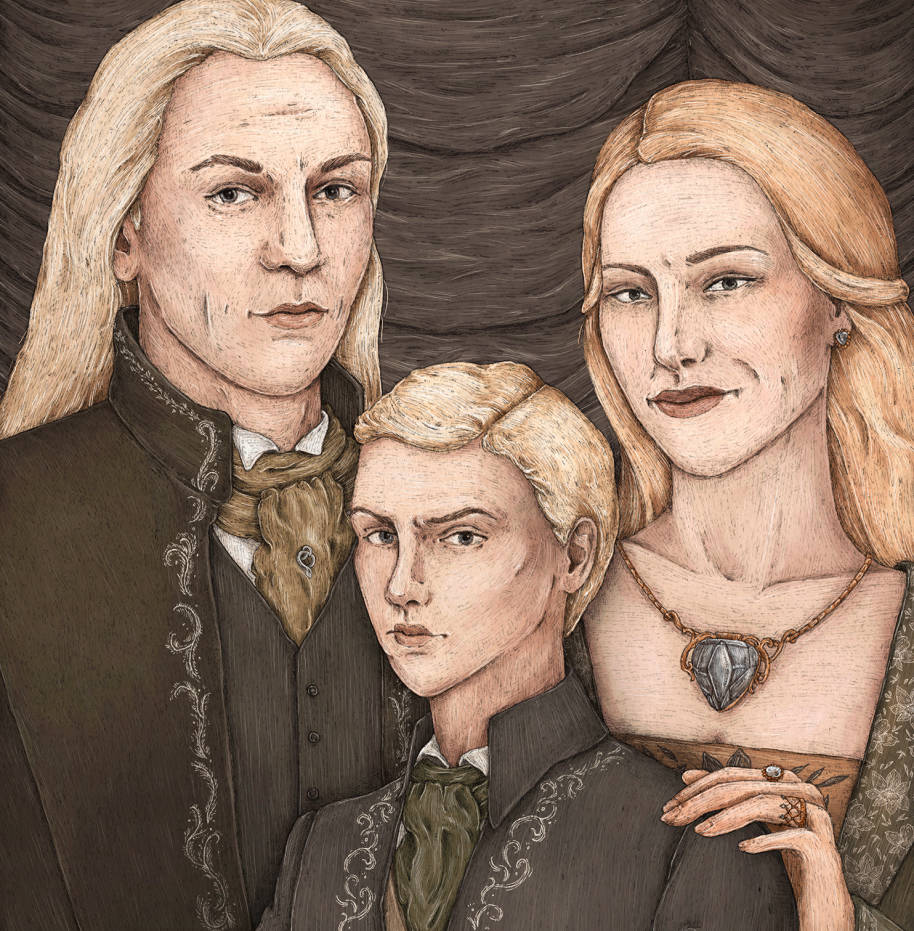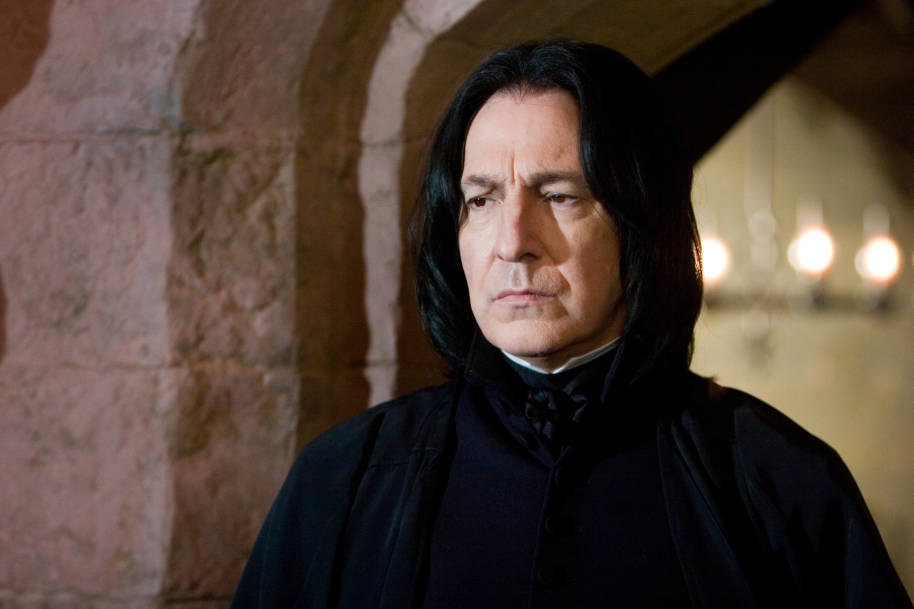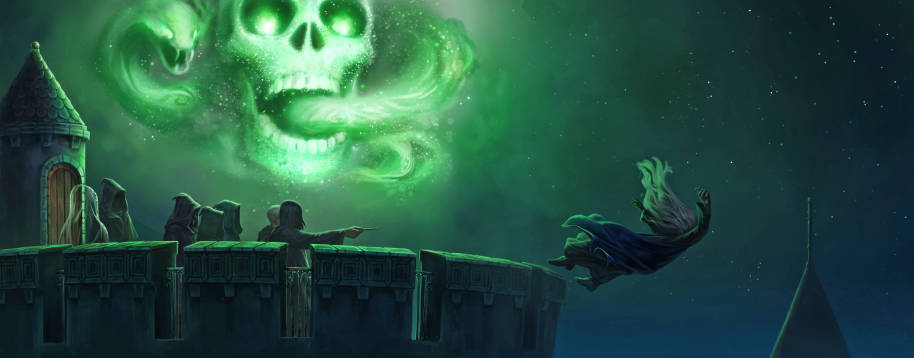
The Dark Mark, as Hermione first explained, was Voldemort’s symbol or ‘sign’. It had two forms: a physical Dark Mark cast in the sky using the spell ‘Morsmordre’ and an actual mark, burnt into the forearm of Voldemort’s Death Eaters. In both instances, it featured a skull with a snake protruding from its mouth – snakes, of course, being symbolic of Voldemort, and his ancestor, Salazar Slytherin.
In the years after Voldemort’s defeat, both forms still had the potential to cause fear and confusion, for followers and enemies alike.
The absent Death Eaters
Those who carried the Dark Mark were literally branded by their allegiance to Voldemort. And that ‘vivid red tattoo’ Harry spotted on Wormtail’s arm was not just symbolic – it was also a method of communication. Its colour faded when Voldemort was weak, but as he returned to strength so did the Marks upon his followers’ skins. When Voldemort summoned his Death Eaters, they felt their Dark Marks burn; likewise, they called him by placing a hand upon the Mark.
The varying responses to Voldemort’s summons show that being branded with the Dark Mark was not just a simple statement of allegiance. For some Death Eaters, like Karkaroff, it was a reminder not of loyalty but of betrayal. When Voldemort returned after 13 years’ absence, Karkaroff fled in fear, having passed names to the authorities to save his own skin. Also failing to respond to the summons were the imprisoned Lestranges and perhaps Voldemort’s most faithful servant, Barty Crouch Jr. Those who did respond, then, were neither murderously loyal or traitorous. They were just the ones who avoided Azkaban and, presumably, spent 13 years hiding their arms.

The Malfoys
One such Death Eater was Lucius Malfoy. Lucius may have been happy to slip Riddle’s diary into Ginny Weasley’s belongings and partake in Muggle-torture, but he was also selling off his Dark artefacts and running from the Dark Mark at the Quidditch World Cup. Voldemort berated him for this, and he fell even further from grace when he failed to secure the prophecy during the Battle of the Department of Mysteries.
And yet for Lucius the Dark Mark was a sign of his beliefs. He may not have adhered to Voldemort’s notions of loyalty, but his actions were still those of an arrogant, anti-Muggle wizard. His son Draco, on the other hand, had a much more complicated relationship with the Dark Mark.
Becoming a Death Eater was a turning point for Draco, given it came with the task of killing Dumbledore. Voldemort gave Draco this mission to punish Lucius, but Draco pursued it because he wanted to restore his family’s position. So for Draco, the Dark Mark was bound up with his desire to please his father – yet as he struggled, he also began to question his parents. He couldn’t bring himself to kill Dumbledore in the end, proving that becoming a Death Eater wasn’t the end of the story.

Snape
As one of only a few Death Eaters absent from that graveyard in Goblet of Fire, Snape was further proof that being branded with the Dark Mark was not the full-stop Voldemort thought it should be. Snape’s feelings ran deeper than the Mark upon his skin, and they were what drove him. Despite stopping Karkaroff from talking about it, the burning of the Dark Mark on his arm did not give Snape pause because he’d already made his choices – he even showed it to Fudge, hoping to prove Dumbledore’s assertion that Voldemort had returned.

Harry
Voldemort’s former Death Eaters were personally alerted to his return, but for others it was the physical version of the Mark that signified danger. It was often cast in the sky when someone had been killed – a terrifying sight, as Arthur Weasley described:
‘Just picture coming home, and finding the Dark Mark hovering over your house, and knowing what you’re about to find inside …’ Mr Weasley winced. ‘Everyone’s worst fear … the very worst …’
Harry Potter and the Goblet of Fire
Harry’s first experience of the Dark Mark was chaotic, but the spell cast at the Quidditch World Cup was only a sign of things to come. Before long, he was experiencing that terror himself. On returning to Hogwarts with Dumbledore in Half-Blood Prince, they saw the Dark Mark projected into the sky – and it filled Harry with dread.

Winky
The Dark Mark was a wizard’s mark: a wand was needed to cast the spell that formed it. Yet it was Winky the house-elf who was directly affected by the spell cast at the Quidditch World Cup. Found in possession of the wand that conjured the Dark Mark, Winky was banished from Crouch’s home. It was particularly ironic when we discovered who actually cast that spell, and why Winky was protecting them...

But it wasn’t all bad
The Dark Mark did inspire some positive forms of expression. Hermione drew on the idea to create the D.A.’s Protean-Charmed coins, which grew hot when a new meeting date was set (although, as she pointed out, she ‘decided to engrave the date on bits of metal rather than on our members’ skin’). And, because humour is always valuable and even Voldemort (especially Voldemort) was not immune to the Weasley twins’ mockery, visitors to Weasleys’ Wizard Wheezes could also purchase Edible Dark Marks (strapline: They’ll Make Anyone Sick!).

